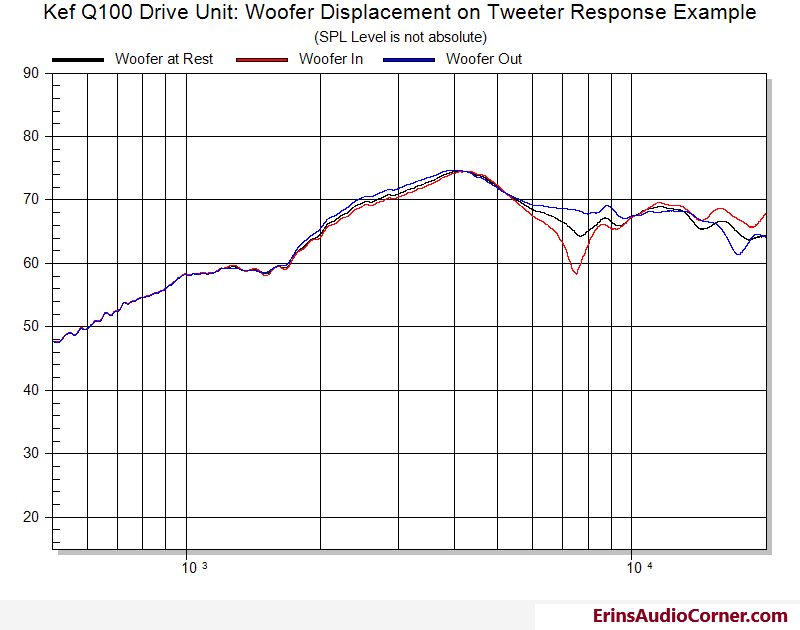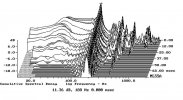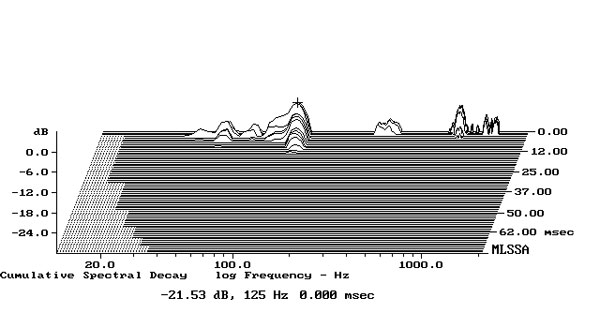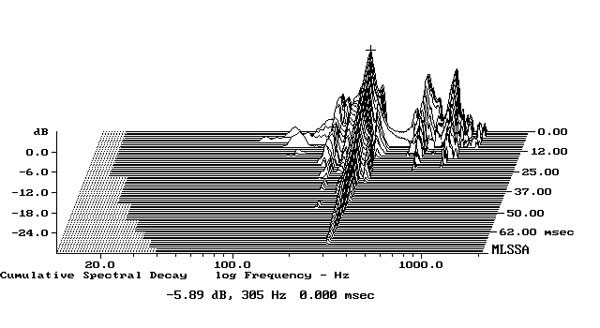As I'm sure you're aware, Doppler & IMD are two different things(but often just called IMD) -- every comparably sized 2-way speaker has higher IMD than a 3-way and that's pretty well known and has been studied by eg Neumann(pg16).I'm not disagreeing, but are you aware of evidence that clearly shows these effects?
I see people routinely play the Doppler/IMD-card with little to nothing for evidence.
The only attempts I've seen to measure the Doppler effect are from Erin. He measured a Kef Q100 driver back in 2013, and that actually did show significant and certainly potentially audible effects.
Kef Q100 Doppler Distortion

He duplicated this test in the IN-5 review and that showed much, much less, although still some effect. That's not surprising because it's a 3-way design and so the midrange needs far less excursion.
Kali IN-5 Doppler Distortion

Doppler distortion is also cited as one of the reasons that Genelec chose to make the Ones 3-way in their white paper on the design.
However, current coaxial transducers suffer from problems such as sound-colouring diffraction due to discontinuities between the coaxially located drivers. Particularly two-way coaxial designs can have problems with Doppler distortion, having to operate each transducer over a wide frequency band. Although a two-way active loudspeaker is the ubiquitous reliable work horse of the industry, a three-way design offers the potential for improving performance in several ways including extended frequency range, better control of directivity, higher output capacity and lower distortion. Particularly for coaxial designs, a three-way construction can also significantly reduce the issue of Doppler distortion in the coaxial transducers.
Now, how audible is any of this? It's an open question short of blind testing. But we *do* have at least one report from Harman blind testing that indicated this type of distortion in Kef 2-ways had a significant impact on preference ratings.
The statistical listening test results rated the speaker lower than the Spinorama measurements would have rated it. Since the Spinorama statistically correlates highly (0.86) to listener preference we felt the need to investigate. Our intention was not to bash the KEF, but to discover which measurement might explain the discrepancy. To be completely correct, we have not studied the issue sufficiently to say with absolute certainty that IMD (Intermodulation Distortion) due to the coaxial alignment is the definitive cause. However, the evidence, meager though it may be, does support this...
However, it is not our intention to abuse the DUTs. We only ran the IMD test up to 8V (~99dB), not 22V, so well within the operational range. Instead of picking the worst case bass frequency for each speaker, we specifically set the bass tone to 90Hz. This was well within the rated operational parameters of all the speaker models; and 90Hz is above the standard (80Hz) electronic crossover to a subwoofer (i.e.: this will happen even if the customer uses a subwoofer!). Incidentally 90Hz was the worst case bass frequency for the Revel, but not the KEF. So, I feel what we did was more than a fair replication of real-world conditions. At 5.67V (4W ~93dB nominal) the KEF has 16% IMD in the voice sweep, 23% at 8V. When listening to this test, the IMD is clearly audible, even 5%. Hence we use it as a demo. Not to bash, but to educate. When the IMD is heard in this way, it is very compelling to accept that this could cause reduced preference by listeners. Listening corroborates the IMD test data.
They conclude:
...this effect will probably be mitigated in a 3-way system. The higher the crossover frequency and more limited the frequency range, the less cone movement and the less IMD. There are other mitigation techniques. But that is what they are. IMD is inherent to all drivers and, while it may be caused by many factors, most are a function of excursion.
Between the measurements, and the conclusions from multiple manufacturers who follow the science that a 3-way is the "gold standard" for coaxials, I think the evidence is clear that 2-way coaxials are indeed inherently flawed. This flaw may not be audibly significant at close distances or low levels, but that is pretty much impossible to determine without very carefully designed blind testing of specific models.
That doesn't mean nobody should buy an LS50 Meta, or that it sounds worse than an 8331A. But if you want the best performing coaxial, and especially if it's important that it sound good while playing loudly, then you want a 3-way.
Combining the tweeter and the midrange (and/or) woofer can limit the size of the magnet, reduce the driver area, and limit the maximum excursion more than a non-coaxial design. These are just general design challenges though and f ex Genelec has obviously overcome them with the design of the 8361A.Size will affect SPL, sure.
Coaxial-ness, though? What's the connection?
Last edited:





